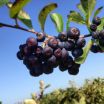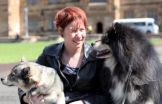(Press-News.org) This eruption occurred just before the 1815 Tambora volcanic eruption which is famous for its impact on climate worldwide, with 1816 given memorable names such as 'Eighteen-Hundred-and-Froze-to-Death', the 'Year of the Beggar' and the 'Year Without a Summer' because of unseasonal frosts, crop failure and famine across Europe and North America. The extraordinary conditions are considered to have inspired literary works such as Byron's 'Darkness' and Mary Shelley's Frankenstein.
However, the global deterioration of the 1810s into the coldest decade in the last 500 years started six years earlier, with another large eruption. In contrast to Tambora, this so-called 'Unknown' eruption seemingly occurred unnoticed, with both its location and date a mystery. In fact the 'Unknown' eruption was only recognised in the 1990s, from tell-tale markers in Greenland and Antarctic ice that record the rare events when volcanic aerosols are so violently erupted that they reach the Earth's stratosphere.
Working in collaboration with colleagues from the School of Earth Sciences and PhD student Alvaro Guevara-Murua, Dr Caroline Williams, from the Department of Hispanic, Portuguese and Latin American Studies, began searching historical archives for references to the event.
Dr Williams said: "I spent months combing through the vast Spanish colonial archive, but it was a fruitless search – clearly the volcano wasn't in Latin America. I then turned to the writings of Colombian scientist Francisco José de Caldas, who served as Director of the Astronomical Observatory of Bogotá between 1805 and 1810. Finding his precise description of the effects of an eruption was a 'Eureka' moment."
In February 1809 Caldas wrote about a "mystery" that included a constant, stratospheric "transparent cloud that obstructs the sun's brilliance" over Bogotá, starting on the 11 December 1808 and seen across Colombia. He gave detailed observations, for example that the "natural fiery colour [of the sun] has changed to that of silver, so much so that many have mistaken it for the moon"; and that the weather was unusually cold, the fields covered with ice and the crops damaged by frost.
Unearthing a short account written by physician José Hipólito Unanue in Lima, Peru, describing sunset after-glows (a common atmospheric effect caused by volcanic aerosols in the stratosphere) at the same time as Caldas' "vapours above the horizon", enabled the researchers to verify that the atmospheric effects of the eruption were seen at the same time on both sides of the equator.
These two 19th century Latin American scientists provide the first direct observations that can be linked to the 'Unknown' eruption. More importantly, the accounts date the eruption to within a fortnight of 4 December 1808.
Dr Erica Hendy said: "There have to be more observations hidden away, for example in ship logs. Having a date for the eruption will now make it much easier to track these down, and maybe even pinpoint the volcano. Climate modelling of this fascinating decade will also now be more accurate because the season of the eruption determines how the aerosols disperse around the globe and where climatic effects are felt."
Alvaro Guevara-Murua added: "This study has meant delving into many fields of research – obviously paleoclimatology and volcanology, but also 19th century meteorology and Spanish colonial history – and has also needed rigorous precision to correctly translate the words of two scientists writing 200 years ago. Giving them a voice in modern science has been a big responsibility."
One further question remains: why are there so few historical accounts of what was clearly a significant event with wide-reaching consequences? Perhaps, Dr Williams suggests, the political environment on both sides of the Atlantic at the beginning of the nineteenth century played a part.
"The eruption coincided with the Napoleonic Wars in Europe, the Peninsular War in Spain, and with political developments in Latin America that would soon lead to the independence of almost all of Spain's American colonies. It's possible that, in Europe and Latin America at least, the attention of individuals who might otherwise have provided us with a record of unusual meteorological or atmospheric effects simply turned to military and political matters instead," she said.
INFORMATION:
The research is published this week in the journal, Climate of the Past.
The authors acknowledge the support of the AXA Research Fund, the Royal Society, and the Cabot Institute at the University of Bristol.
Paper
'Observations of a stratospheric aerosol veil from a tropical volcanic eruption in December 1808: is this the 'Unknown' ~1809 eruption?' A. Guevara-Murua, C. A. Williams, E. J. Hendy, A. C. Rust, K. V. Cashman in Climate of the Past
The Cabot Institute
The Cabot Institute carries out fundamental and responsive research on risks and uncertainties in a changing environment. It drives new research in the interconnected areas of climate change, natural hazards, water and food security, low carbon energy, and future cities. Its research fuses rigorous statistical and numerical modelling with a deep understanding of social, environmental and engineered systems – past, present and future. It seeks to engage wider society by listening to, exploring with, and challenging its stakeholders to develop a shared response to 21st Century challenges. Find out more about our work at http://www.bristol.ac.uk/cabot
First eyewitness accounts of mystery volcanic eruption
2014-09-18
ELSE PRESS RELEASES FROM THIS DATE:
Lunar explorers will walk at higher speeds than thought
2014-09-18
Anyone who has seen the movies of Neil Armstrong's first bounding steps on the moon couldn't fail to be intrigued by his unusual walking style. But, contrary to popular belief, the astronaut's peculiar walk was not the result of low gravity. Wyle Science, Engineering and Technology scientist John De Witt explains that the early space suits were not designed for walking, so the astronauts adapted their movements to the restrictions of the suit. Michael Gernhardt, the head of NASA's Extravehicular Activity Physiology, Systems and Performance Project, wants to learn more about ...
Wild berry extract may strengthen effectiveness of pancreatic cancer drug
2014-09-18
A wild berry native to North America may strengthen the effectiveness of a chemotherapy drug commonly used to treat pancreatic cancer, reveals research published online in the Journal of Clinical Pathology.
The study by researchers at King's College Hospital and the University of Southampton suggests that adding nutraceuticals to chemotherapy cycles may improve the effectiveness of conventional drugs, particularly in hard to treat cancers, such as pancreatic cancer.
The team tested the effectiveness of extract of chokeberry (Aronia melanocarpa) in killing off cancer ...
Violence rates can be halved in just 30 years, say leading experts
2014-09-18
New evidence will be presented at the first Global Violence Reduction Conference in Cambridge this week which shows that homicide rates have been declining since the mid-1990s in many parts of the world - in some cases dramatically.
Nations as diverse as Estonia, Hong Kong, South Africa, Poland, and Russia have seen average recorded homicide rates drop by 40% or more in the course of just 15 years. Out of 88 countries where trend data could be found, 67 showed a decline and only 20 showed an increase between 1995 and 2010, a new analysis of data from the United Nations ...
The Lancet Haematology: PET-CT predicts lymphoma survival better than conventional imaging
2014-09-18
Positron emission tomography/computed tomography (PET-CT) is more accurate than conventional CT scanning in measuring response to treatment and predicting survival in patients with follicular lymphoma, and should be used routinely in clinical practice, according to new research published in The Lancet Haematology.
"Our findings have important implications for patients with follicular lymphoma, a common and usually slow-growing lymphoma. Compared to conventional CT scanning, PET-CT is more accurate in mapping-out the lymphoma, and better identifies the majority of patients ...
Peacock's train is not such a drag
2014-09-18
The magnificent plumage of the peacock may not be quite the sacrifice to love that it appears to be, University of Leeds researchers have discovered.
Dr Graham Askew, from the University's School of Biomedical Sciences, filmed five Indian peacocks taking off using two high-speed video cameras to try to work out what price male birds pay for carrying the spectacular iridescent feathers they use in displays to attract females.
"These feathers weigh about 300g and can exceed 1.5m, so it's expected that the male birds would be making a significant sacrifice in their flight ...
'Office life' of bacteria may be their weak spot
2014-09-18
Scientists at the University of Leeds think we may be able to drown deadly bacteria in their own paperwork.
A research team in the University's Astbury Centre for Structural Molecular Biology has identified for the first time how the "paper shredder" that keeps the bacteria E. coli on top of its day job works.
Now the group are looking for ways to jam the mechanism and leave E. coli and similar bacteria in filing hell.
Dr Kenneth McDowall, Associate Professor in Molecular Microbiology, who led the research, said: "If we block the 'shredder' using genetics in the ...
Space: The final frontier ... open to the public
2014-09-18
Historically, spaceflight has been reserved for the very healthy. Astronauts are selected for their ability to meet the highest physical and psychological standards to prepare them for any unknown challenges. However, with the advent of commercial spaceflight, average people can now fly for enjoyment. The aerospace medicine community has had very little information about what medical conditions or diseases should be considered particularly risky in the spaceflight environment, as most medical conditions have never been studied for risk in space — until now.
The aerospace ...
Nile River monitoring influences northeast Africa's future
2014-09-18
Curtin University research that monitors the volume of water in the Nile River Basin will help to level the playing field for more than 200 million North-East Africans who rely on the river's water supply.
Despite being arguably the longest river in the world, winding through nine different countries, the Nile River is shallow and has a low volume, making its water precious, particularly to those countries located downstream.
Curtin Associate Professor Joseph Awange, Department of Spatial Sciences, has been monitoring extractions or additions of water to the Nile River, ...
Kids eat better if their parents went to college
2014-09-18
Children of college-educated parents eat more vegetables and drink less sugar, according to a new study from the University of British Columbia. But it's still not enough, the study goes on to say, as all kids are falling short when it comes to eating healthier at school
The research suggests a parent's educational attainment, an indicator of socioeconomic status, may inform a child's diet.
The study found Vancouver school children whose parents completed some post-secondary education were 85 per cent more likely to eat vegetables during the school week than those with ...
Dogs can be pessimists too
2014-09-18
Dogs generally seem to be cheerful, happy-go-lucky characters, so you might expect that most would have an optimistic outlook on life.
In fact some dogs are distinctly more pessimistic than others, research from the University of Sydney shows.
"This research is exciting because it measures positive and negative emotional states in dogs objectively and non-invasively. It offers researchers and dog owners an insight into the outlook of dogs and how that changes," said Dr Melissa Starling, from the Faculty of Veterinary Science. Her PhD research findings are published ...

